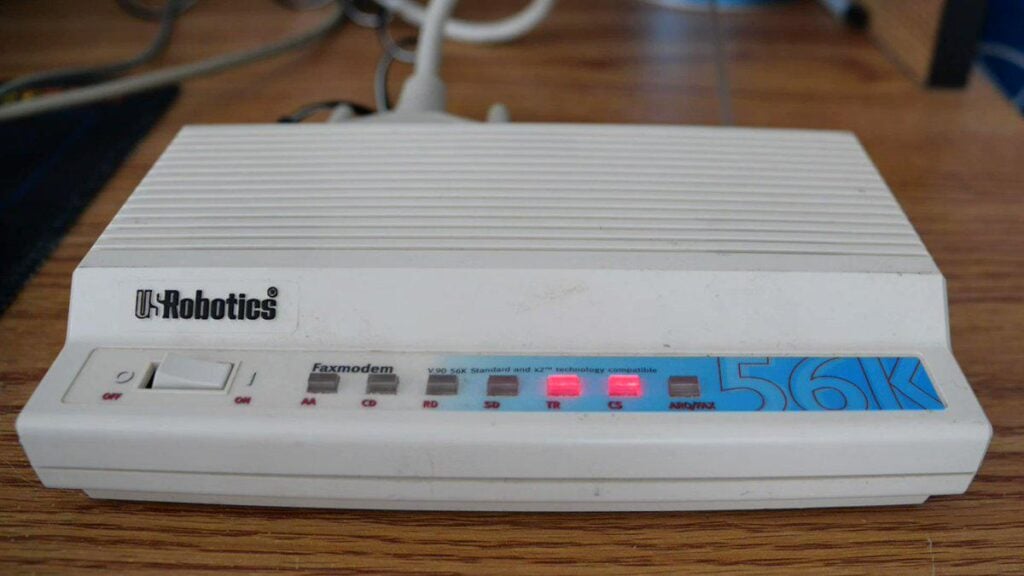⚠️ This article explains why Atomic avoids using PPPoE*.
Remember PPP from dial-up days? You may have many good memories of the sound of your modem connecting to the internet, but we can all agree that it would be painful to use dial-up internet technology today.
PPPoE was designed for DSL lines. PPPoE was standardised in 1999, for the transmission of PPP over Ethernet. PPP is even older and was designed to send data over analogue modems. The Point-to-Point Protocol has its origins in the late 1980s.
Somehow this technology from dial-up days is still in use by most of the local fibre ISPs today!?
Switch to Atomic if you want to escape this legacy technology.
🚀 Fibre is not just faster ADSL
PPPoE is part of our founding story. When we started Atomic, we set out to build a fibre-only ISP with no legacy technologies. No web hosting. No ADSL. Only using Open Access fibre networks.
Part of the reason we started Atomic was to offer an alternative to PPPoE. Around early 2015, we were involved in building fibre networks. All the ISPs joining the new fibre networks just viewed fibre as ‘faster ADSL’, keeping all their PPPoE systems the same as from dial-up internet days.
The fibre networks supported DHCP and DHCPv6, but at this point in time no ISP offered an alternative to PPPoE.
We would see support tickets of customers with gigabit fibre lines seeing ~700Mbps speed test results. The problem was usually a router where the CPU could not handle the layer 2.5 encapsulation/decapsulation rates needed by PPPoE at gigabit speeds.
Ten years later (2025), we’re about to reach the next inflection point in fibre speeds with XGS-PON offering FTTH speeds up to 10Gbps. It’s time for PPPoE to die.

⚙️ Technical reasons why Atomic does not use PPPoE
- MTU and fragmentation. PPPoE drops your MTU to 1492 while the rest of the internet runs on a 1500 Byte MTU. This causes packets to get fragmented, needing reassembly by your router.
- Software / CPU vs ASIC. PPPoE needs CPU resources to forward packets. This is much less efficient than hardware-accelerated ASIC routing. Read our article about ASIC routing.
- Consistent latency. The additional processing for PPPoE introduces variable latency and jitter, whereas direct Ethernet switching delivers predictable performance, especially for gaming or real-time applications.
- Overhead. PPPoE adds an 8-byte header to every packet, slightly reducing effective throughput on high-speed fibre links.
- ISP side devices are also inefficient. PPPoE forces the ISP to also use inefficient CPU / software-based routers, which create scaling challenges.
- Simpler user setup. No need for username/password configuration in routers, reducing errors and support calls.
- IPv6 support. PPPoE often requires additional tunnelling or dual-stack hacks for IPv6, while native DHCPv6 enables seamless prefix delegation and full IPv6 support without legacy overhead.
- Power needs. PPPoE is generally less power-efficient because of the extra processing needed.
- Easy speed testing. We often need customers to do a cabled speed test directly in their fibre box (ONT). This is much easier with DHCP. No need to set up a PPPoE login on your laptop.
🦎 Openserve and PPPoE
*Openserve fibre only supports PPPoE, so we are forced to support it. We resisted joining Openserve for a long time, partly because of PPPoE. We ended up joining the Openserve network mostly because existing customers moved house and wanted to remain Atomic customers. Even today Openserve lines are limited to 500Mbps. Not because of the fibre speed, but most probably because Openserve will get a flood of support tickets from people expecting 950Mbps on a gigabit line and seeing slow speed test results.
🚀 Fibre is the Future
ASIC routing and 100% fibre networks are the future. Let’s dump legacy protocols which require CPU and software forwarding – this can’t scale and keep up with the rate of progress in the fibre industry.
Switch to Atomic if you have fibre from Octotel, Frogfoot or Vumatel, and would like to use DHCP / DHCPv6.
🤓 Read More
If you like the idea of purist networking, read: Purist Open Networking at ASIC Speeds
Learn the history of software vs hardware routing, read: The world in which IPv6 was a good design
